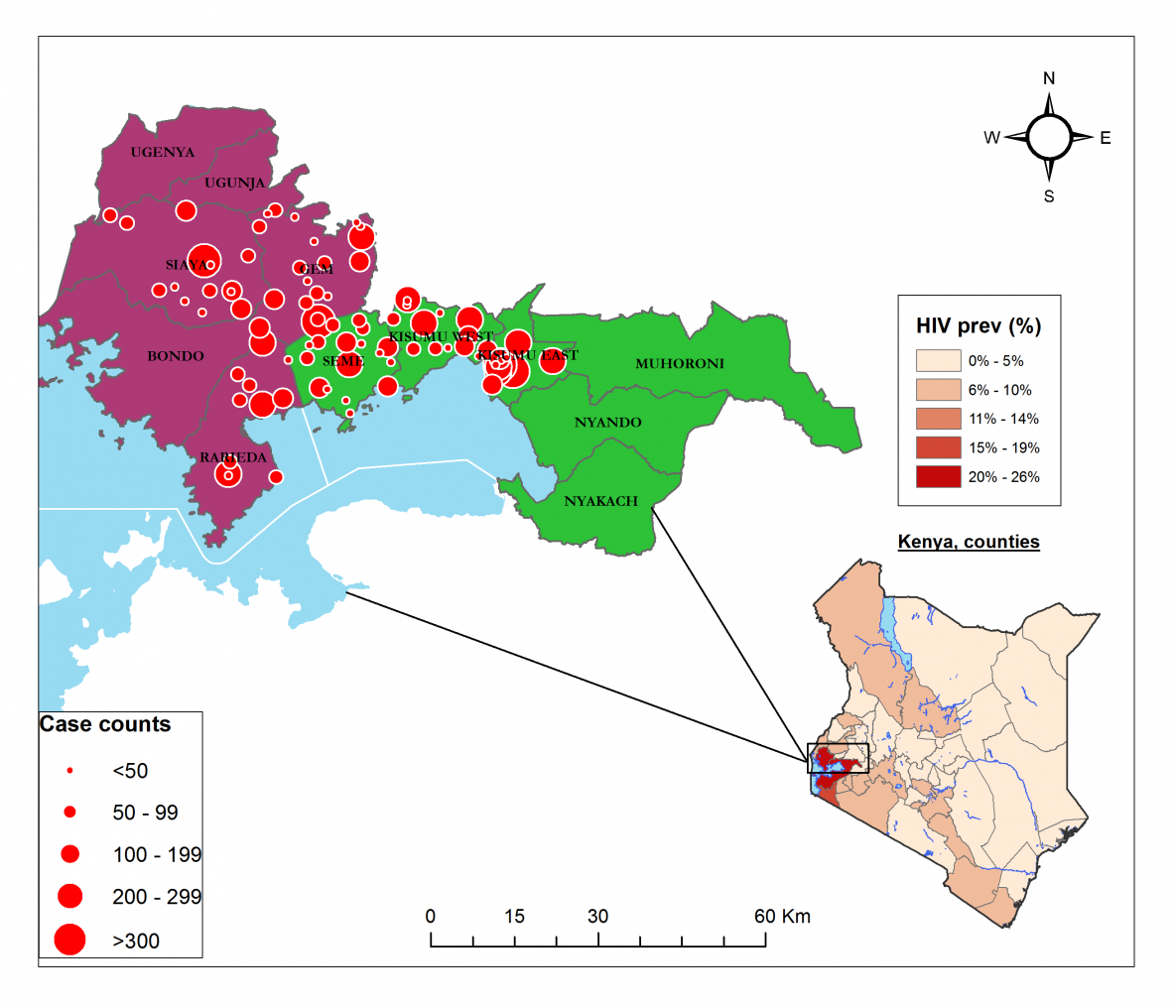CDC Kenya Tests Efficient Method for Uniquely Identifying HIV Cases

HIV CBS pilot data from 124 facilities in two high HIV-burden counties in Western Kenya
Following the launch of the UNAIDS 90-90-90 targets, it became clear that accurate and efficient surveillance methods are needed to monitor Kenya’s progress towards meeting those goals. HIV case-based surveillance (CBS) is more accurate than aggregate reporting in tracking these targets. In the absence of a lifelong unique personal identifier, as is the case in Kenya, there are various methods to accurately identify unique HIV cases.
Generally, data managers link records when the name or an identifying number for a patient is exactly the same in two (or more) records. This linkage is likely when a person is tested in one clinic and starts treatment in another location. This traditional approach is referred to as “deterministic” matching. However, this method is often cumbersome without the unique identifier and not feasible for large datasets, such as the thousands of HIV patients in Kenya. Another approach is to link records using partial matching of names, numbers, demographics or location, using computer-based analysis of the “best possible” match (referred to as “probabilistic” matching); and then evaluating the accuracy of the process to accept or reject the match. This better accounts for differences in spelling, nicknames, name order, etc. The “best possible” method, or probabilistic matching, which was tested in Kenya, may offer a solution for large datasets.
CDC Kenya epidemiologists, in collaboration with other partners (University of California San Francisco, National AIDS and STI Control Program and KEMRI), led a pilot project to implement CBS in western Kenya, which compared the feasibility deterministic method) and the “best possible” approach. In this pilot, the “best possible” method performed better than the traditional approach. The epidemiologists estimated that at least 5% of cases are over-reported due to not accounting for duplicated cases. Determining the percentage of duplicates also helps ensure the accuracy of setting estimates and projection models. The results from this study suggested that the “best possible” name matching method best meets the needs for CBS in Kenya, especially in the absence of a unique identifier. Given the new information revealed from this study, the findings were presented at the International AIDS Society Meeting in Paris in July 2017.
This type of study is a necessary contribution to surveillance efforts in Kenya to monitor the country’s progress towards meeting the UNAIDS targets.